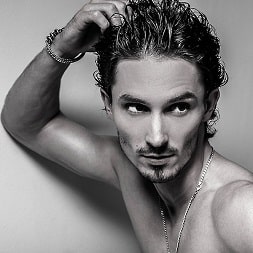FAQ HAIR TRANSPLANT
Get answers to your questions about hair transplant
WHAT IS A GRAFT?
The term graft also known as "follicular unit", is a hair root surrounded by the scalp. A graft consists of one to four hairs. The number of grafts required for a hair transplant depends on the extent of baldness.
IS THE FUE HAIR TRANSPLANT PAINFUL?
No, this technique is painless. It is performed under local anaesthesia and allows the patient to be conscious and relaxed. In addition, he/she can listen to music and watch TV during the operation and will be able to enjoy a lunch during the break. The anaesthesia is done by subcutaneous injection on the donor and recipient areas, so that there is no pain during both phases.
FROM WHICH AREA IS THE HAIR REMOVED DURING A HAIR TRANSPLANT?
During a hair transplant, the Hippocratic crown is used as the donor area. This is the area above the ears and the back of the neck. The hair in this area is not sensitive to hormonal activity, which causes hair loss. This genetic programming allows them to last a lifetime. Once re-implanted on the bald area, the hair retains this characteristic and thus does not risk falling out.
ARE FUE HAIR TRANSPLANT SESSIONS PERFORMED IN STERILE ROOMS?
The rooms are completely sterile and secure and the tools used are single-use.
WILL THE HEAD BE BANDAGED AFTER THE PROCEDURE?
Yes, the head will be bandaged in the donor area only to avoid any risk of infection. You will be able to remove the bandage yourself the morning after your session.
DOES THE HAIR TRANSPLANT LEAVE SCARS?
No, the tools used are so precise and fine that you will not have any scars. The treated area will be a little red for 3 to 7 days depending on your skin type.
WHAT ARE THE CONSEQUENCES OF THE TRANSPLANT ON THE DONOR AREA?
The hair extracted from the donor area does not usually grow back, since it is taken from the root. But the hair density in the occipital crown is very important. The removal is done in such a way that the redistribution of the hair looks as natural as possible. Moreover, FUE does not leave any scars.
WHAT COMPLICATIONS CAN ARISE FROM HAIR TRANSPLANTATION?
There are no complications, but the patient may feel weak, experience headaches or mild burning or itching. A temporary loss of sensitivity in the treated areas may also occur a few days after the procedure. The local anaesthetic can sometimes cause swelling without pain or danger (oedema), only 10% of patients experience this inconvenience and it fades gradually and naturally after 3 or 4 days.
CAN THE IMPLANTED HAIR FALL OUT?
Between the 3rd and 8th week, it is normal for most of the newly implanted hair to fall out. This is when a new growth cycle begins. After 8 to 12 months the new hair will be fully developed.
WILL THE IMPLANTED HAIR REMAIN FOR LIFE?
Yes, the implanted hair, genetically programmed not to fall out, will grow back for the rest of your life.
IS THE LIFE SPAN OF BLACK AND GREY HAIR DIFFERENT?
No, after transplantation, both types of hair will naturally grow identically.
SHOULD I WAIT TO DRINK ALCOHOL?
We recommend waiting 5 days before consuming alcohol, especially as the patient will be under antibiotics.
HOW DOES A BEARD TRANSPLANT WORK?
Beard transplantation is indicated for sparse beards to increase density or fill in gaps. The follicles (grafts) used for the re-implantation are taken from the back of the skull in the same way as for hair transplants.
ARE THERE ANY CASES WHERE TRANSPLANTATION IS NOT POSSIBLE?
In general, anyone can undergo a hair transplant. However, there are cases where the transplant cannot be done, especially if the baldness is too extensive and the occipital area has a very low density to be removed.
CAN A HAIR TRANSPLANT STOP THE EVOLUTION OF BALDNESS?
The main purpose of a hair transplant is to mask the damage caused by baldness, but not to stop it. However, an experienced practitioner will be able to distribute the grafts, by analysing and anticipating the evolution of the baldness.









